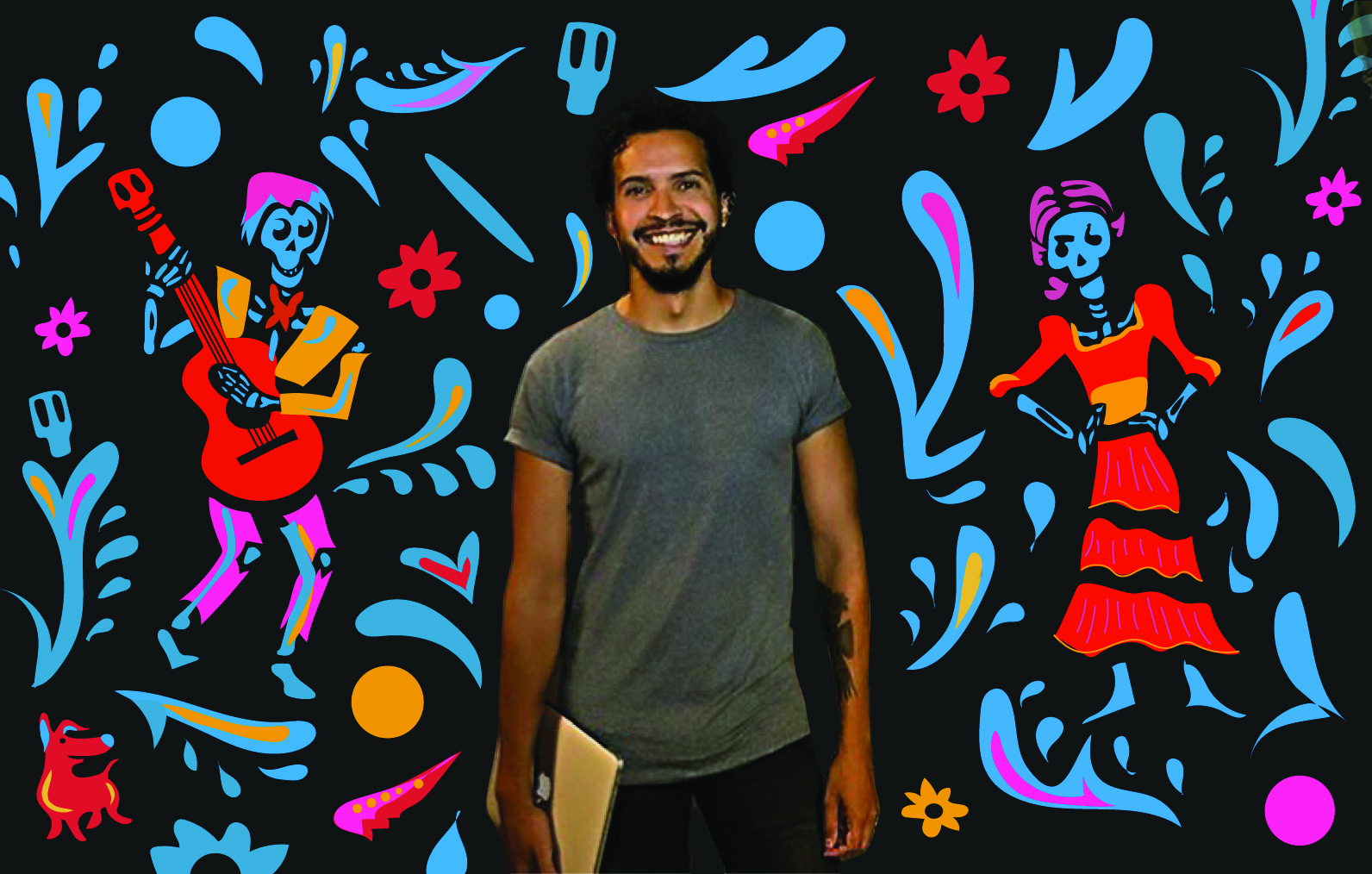Q&A: Alumnus describes working on “Coco,” seeing self represented on film

UCLA alumnus Jesus Martinez worked as the layout and animation manager on the film “Coco.” Drawing on his knowledge of Mexican culture, Martinez shared with his crew details and materials such as videos that would increase the cultural authenticity of the film. (Photo courtesy of Debby Coleman, illustration by Amy Fang/Daily Bruin illustrator)
By Olivia Mazzucato
Nov. 21, 2017 9:57 p.m.
Jesus Martinez knew instantly that he wanted to work on “Coco” – it was one of the first times he saw a character on the big screen who looked like him when he was a kid.
The UCLA alumnus had just finished working on “The Good Dinosaur” as a lighting manager when Pixar began putting together a production staff for “Coco,” a film that focuses on Mexican culture. Martinez told his department head that he wanted to work on the project and was able to join the film as the layout and animation manager.
The Daily Bruin’s Olivia Mazzucato spoke to Martinez about his role working on “Coco,” how he worked to instill the film with cultural authenticity and his personal connections to the protagonist.
Daily Bruin: What elements of “Coco” stood out to you and differentiated the film from previous projects?
Jesus Martinez: When I saw the first screening in reels, I wasn’t on the film yet, I wasn’t working on it. And I saw it and I’m like, “This is going to be an amazing film.” You just knew it had the heart. It was really long and there was a lot of stuff that didn’t make it into the film and didn’t need to be in there, but I was able to see through all that. I’m like, “Okay, the ending’s really satisfying and it’s just an emotional journey,” so I knew early on that it was going to be something special.
DB: What did your role as a layout and animation manager entail?
JM: My responsibilities were to make sure that our director reviews (ran) well, that the animators felt supported, that they had resources in us in case anything was broken or they just needed help with something. I needed to know the status of every single shot that was on the floor – just to know and see where we were on a productivity kind of level and morale. We knew this was going to be a really hard crunch at the end, so (we had to make) sure that we were supporting them in that way as well.
DB: “Coco” is a film that relies on cultural authenticity. What did you do to ensure that this manifested in the final project?
JM: I think for me, it’s sharing my knowledge of the culture, like, “Here’s this reference video,” or “Hey, check out this artist – they were pretty inspirational and this character reminds me of that.” And not being intimidated to speak up, (and say) “We don’t actually say that or that word is actually something else; there’s a double meaning, double entendre,” making sure that I’m speaking up there. Pixar has the practice of, after every screening that’s a work-in-progress, anyone who’s at that screening is welcome to give notes, so I had that venue as well … so I felt like if something really bugged me, I would speak up.
DB: In what ways do you think the film is specific to Mexican culture but also relatable for audiences of other cultures?
JM: Well, I think it’s particularly Mexican with the music, with the food that’s displayed, the visuals, the setting, obviously the Spanish, the sort of colloquialisms we use there and the Día de los Muertos. But at the same time, a lot of other cultures have very similar celebrations to it and for most cultures, family is a very, very important aspect of (people’s) lives. At the heart of this movie, it’s about family and how we treat family and how family can hinder us sometimes, but also supports us and helps us grow. That’s kind of the universal message and I think people are going to want to go and talk to their living grandparents and ask them all their questions and stories and remember their past relatives as well in a different light.
DB: What personal connection did you form with “Coco?”
JM: For me, very early on, (the connection) is actually Miguel. His journey of doing something and trying to go for something that his family didn’t approve of was something that I related to – not necessarily because my family disapproved of a career in film, but they just didn’t know (about) it. … So, there was a little bit of a pushback. They were always supportive, but they also just didn’t understand and it was hard for them to be like, “Are you going to be able to make a living? People don’t live off of this career.”
And to be honest, the first shot (of the film that I saw), which was a very rudimentary Miguel model, he was shaded and I saw this brown boy staring at the camera and I got really emotional. I’ve never seen someone that kind of looked like me as a kid featured, much less treated with such care and respect. That’s my favorite moment working on the film, seeing that first shot and just being like, “Wow, this is going to be special for brown boys and girls all over the world.”


